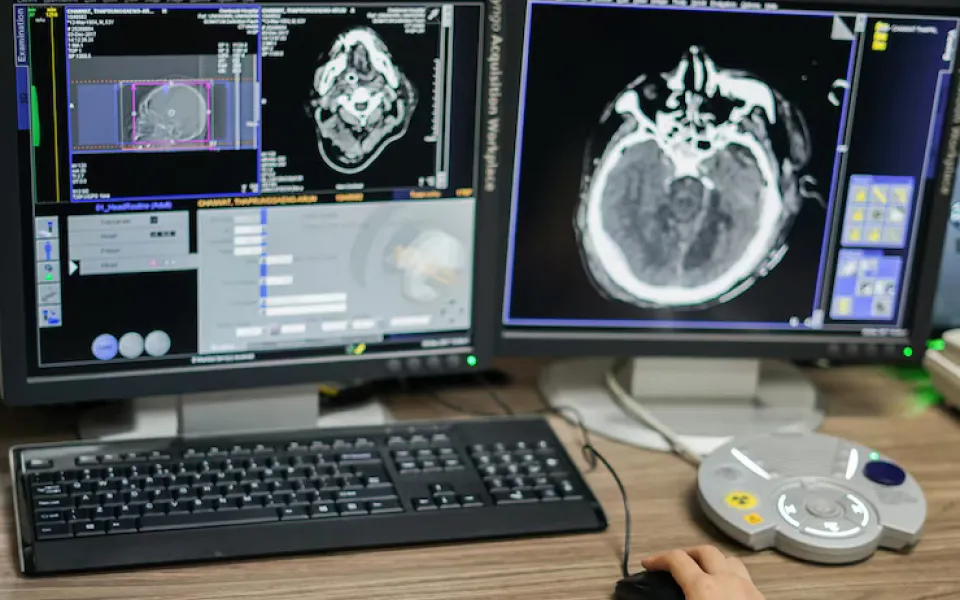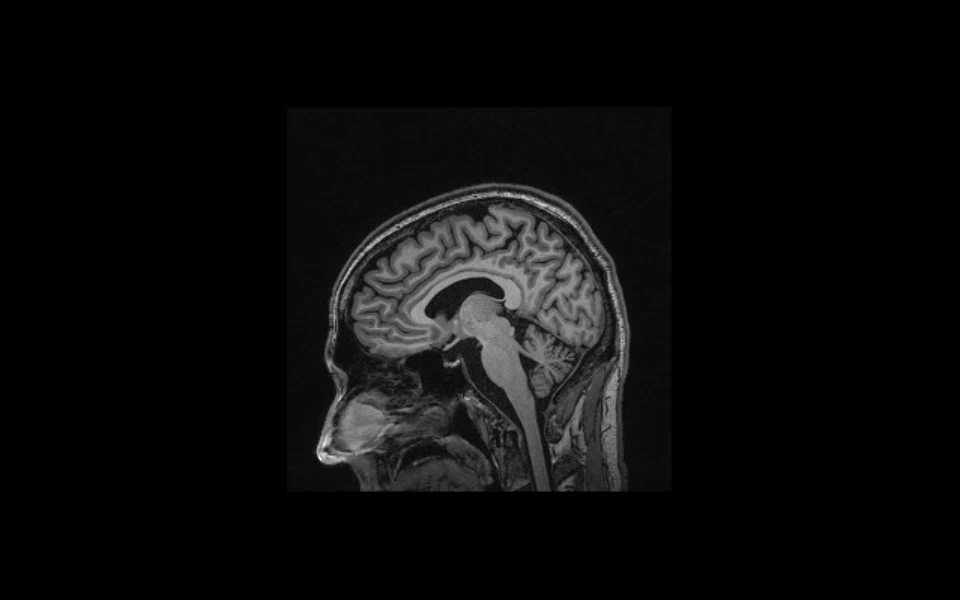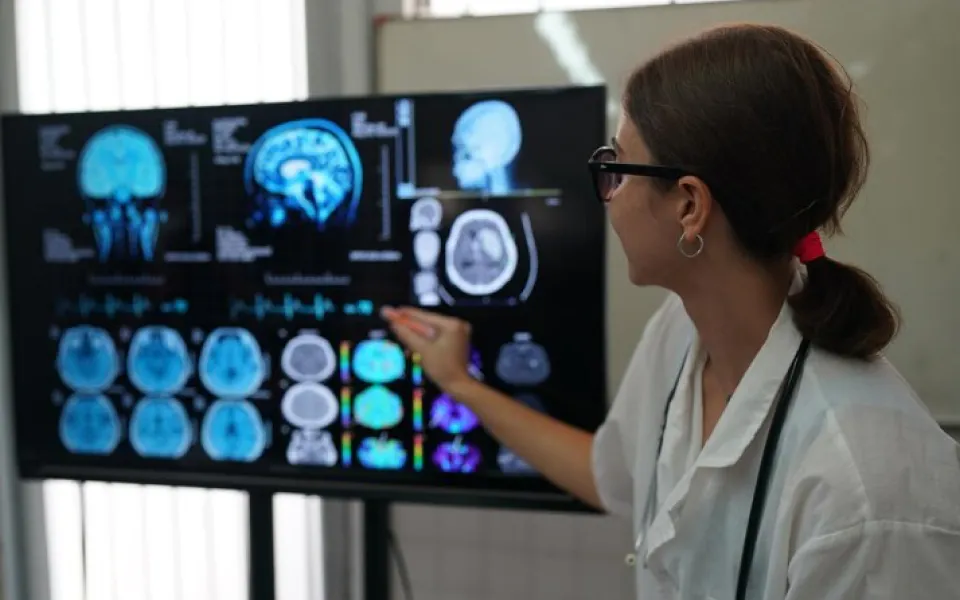
Unified Imaging Access for Healthcare Providers
Access all your imaging files from a single centralized location using our DICOM Interface. This solution merges images coming from multiple sources, whether from local PACS or directly connected imaging devices, offering healthcare professionals a secure and simplified way to access medical imaging data.
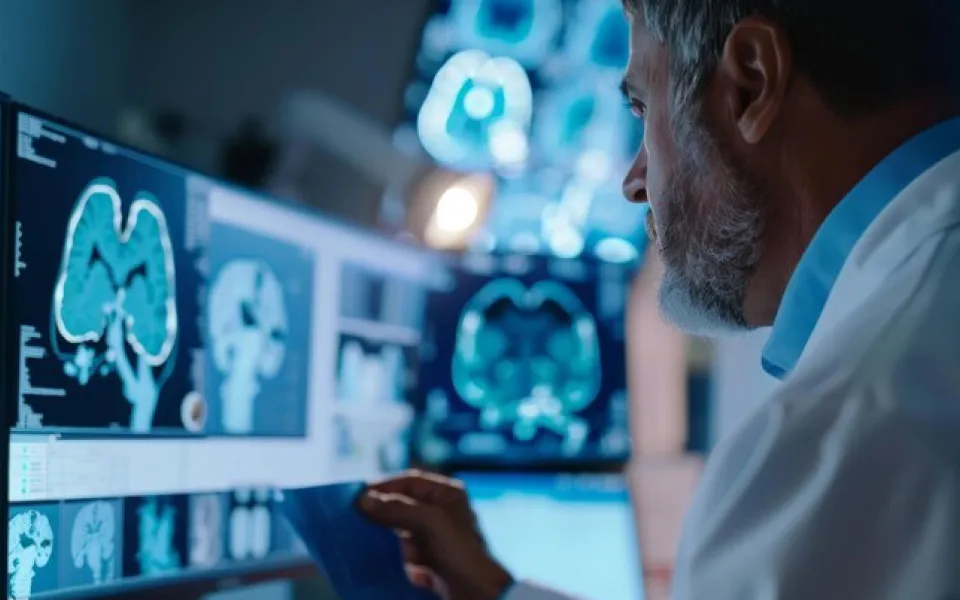
Collaboration with Healthcare Providers
Our system integrates seamlessly with a broad selection of PACS vendors including Agfa Healthcare, Sectra, Intelerad Medical Systems, IBM Watson Health, Fujifilm Synapse, and Change Healthcare Radiology Solutions. We also support major imaging equipment manufacturers such as GE Healthcare, Siemens Healthineers, Philips Healthcare, Fujifilm Healthcare Corporation, and Carestream Health.
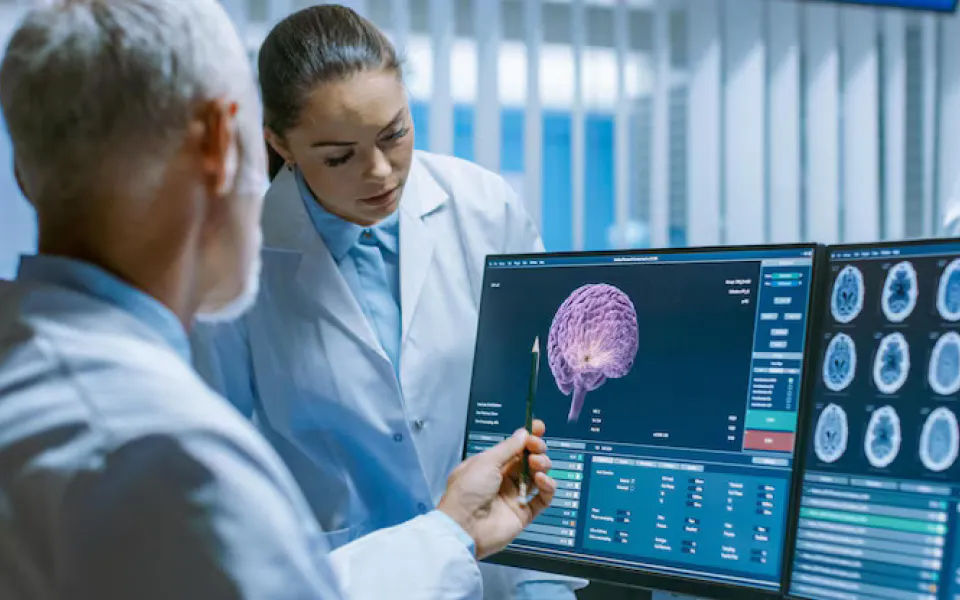
Key Benefits of the DICOM Interface
Rapid Availability
Imaging data is delivered within minutes, giving doctors and specialists quick access to critical information which supports timely and well informed clinical decisions.
Smooth System Integration
Easily connect your existing PACS, modalities, and workstations. Our DICOM Interface integrates effortlessly with your current setup, eliminating compatibility problems and simplifying image exchange processes.
Enhanced Data Protection
Ensure patient information remains confidential with advanced security protocols. The interface uses encryption and user verification to secure the transmission of sensitive imaging data.
Improved Workflow Automation
Reduce manual tasks by automating the retrieval and routing of images. This feature streamlines operations allowing your team to focus on essential healthcare responsibilities.
Scalable and Dependable Performance
Scale your imaging infrastructure confidently. Designed to efficiently handle large amounts of imaging data, the DICOM Interface guarantees reliable access exactly when it’s needed.
Centralized Data Management
Aggregate imaging data from diverse sources into one centralized system. This consolidation facilitates faster access for clinicians and fosters better teamwork in patient care.
Teleradiology
Facilitate secure transfer of imaging studies between different healthcare facilities and radiologists, enabling quicker image interpretations and better teamwork. This expands your service capabilities and ensures prompt diagnoses no matter where patients or specialists are located.
Telehealth
Enable safe sharing of medical images with patients remotely, supporting virtual consultations and encouraging active patient involvement in their care. This helps broaden your telehealth services while enhancing patient satisfaction and engagement.
Artificial Intelligence Development
Offer researchers and developers easy access to imaging data to train AI models, fostering progress in image analysis, diagnostic accuracy, and personalized treatment approaches.
Digital Health Integration
Automate the retrieval and distribution of images, optimize workflows, and improve compatibility with electronic health records (EHR), electronic medical records (EMR), and other healthcare software. This results in increased efficiency and reduces administrative workload.
Centralized Access
Consolidate imaging data from multiple sources into a central repository. The DICOM Interface simplifies access for healthcare professionals, enabling faster diagnoses and enhancing collaboration.
How Does It Operate?
We equip healthcare providers with a simple connector, referred to as a “node,” which links directly to their imaging servers. These nodes scan the connected servers, creating a detailed index and mapping of all stored imaging data, along with establishing a connection to the cloud.
This cloud integration layer supports the development of various workflows, including digital health management, collaborative clinical discussions like tumor boards, remote second opinions, telemedicine, teleradiology services, AI research, and more.
Medical images in DICOM format can be instantly accessed through our platform, securely stored in the cloud based PACS system, ready for immediate use or sharing across networks.
Our system provides comprehensive features for managing, editing, and reviewing DICOM files and other clinical records, promoting streamlined workflow operations and better clinical efficiency.
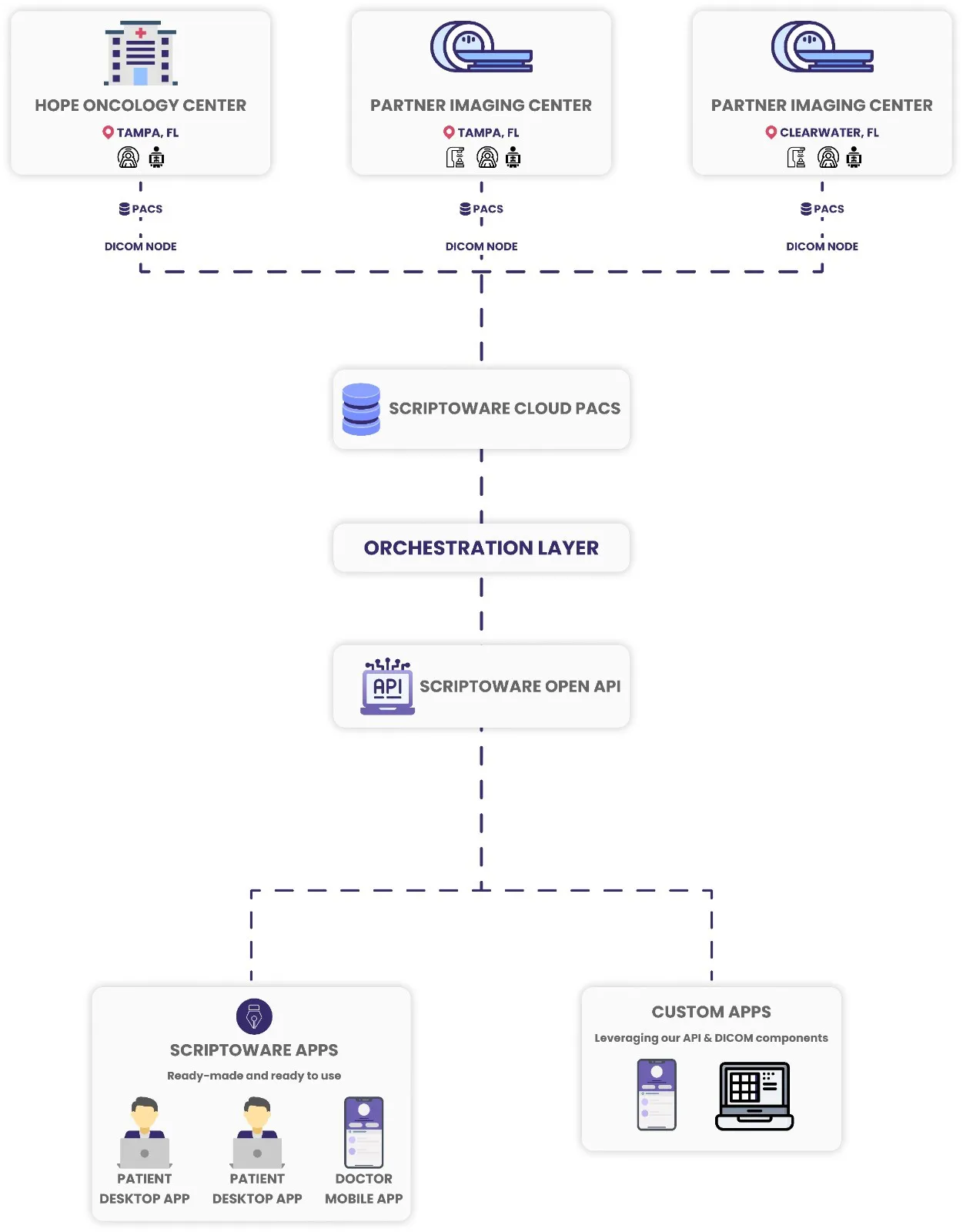
Upload and Connect
Scriptoware’s comprehensive solution enables specialized healthcare providers to effortlessly collect imaging data from their own PACS systems and devices or establish connections with external imaging sources to automatically import studies into their own systems.
This functionality is supported by our proprietary DICOM Node technology.
Secure and Organize
Our interoperable imaging system at Scriptoware is designed to expand alongside your practice’s evolving needs. All imaging files, including reports, pictures, and video records, are safely stored with strict adherence to HIPAA and GDPR privacy regulations.
With our reliable API and precise access controls, your team can quickly and securely retrieve the necessary data, streamlining the deployment of sophisticated imaging processes.
View and Analyze
Users can review and access DICOM imaging studies through Scriptoware’s user friendly web portals and mobile applications.
For more complex imaging needs, our Imaging API works seamlessly with built in DICOM tools such as the web and mobile viewers, facilitating efficient and detailed analysis.
Experience our DICOM viewer firsthand!
Interact with your DICOM files easily from any device, online or on mobile. All your imaging data is securely kept in your Scriptoware cloud PACS workspace, ready whenever you need it.
What Distinguishes Our DICOM Interface?
Our DICOM Interface offers broad interoperability, intelligent data routing, and strong security safeguards to simplify medical image exchange. It automates routine tasks, facilitates easy access, and drives innovations in telehealth, teleradiology, and artificial intelligence development. Installation and configuration can be completed remotely within a few hours, making imaging data readily retrievable and maintaining seamless management of medical imaging archives.
Frequently Asked Questions
Medical imaging is crucial in healthcare for diagnosing, planning treatments, and monitoring conditions. Techniques like CT, MRI, and X-rays provide detailed internal images to detect injuries and diseases. Molecular imaging helps deliver personalized treatments by revealing cellular level activity. Imaging centers perform these tests and supply vital data to support timely and effective care, improving patient outcomes.
Medical imaging uses devices such as X-rays, MRI, CT, and ultrasound to capture internal body visuals, typically stored in DICOM format. Specialized software called DICOM viewers helps healthcare providers analyze these images. Cloud based PACS securely stores and shares images, promoting collaboration and ensuring accurate diagnoses. This technology aids in efficient treatment planning and ongoing patient monitoring.
Diagnostic medical imaging refers to a range of techniques used to capture visual representations of the body’s internal organs and functions to identify illnesses and medical conditions. These techniques include X-rays, computed tomography (CT), magnetic resonance imaging (MRI), ultrasound, and nuclear medicine imaging. Modern Picture Archiving and Communication Systems (PACS) are essential for managing, storing, and accessing these images efficiently.
Medical professionals can securely upload images to cloud based PACS platforms, providing instant and remote access to patient imaging records. This accessibility supports quicker and more precise diagnoses and treatment decisions.
Advanced PACS solutions often incorporate artificial intelligence to analyze images and customizable workflow options, enhancing diagnostic accuracy and overall patient management.
There are several medical imaging modalities, with the four most common being X-rays, CT scans, MRI scans, and ultrasound.
X-rays utilize electromagnetic waves to produce images mainly of bones and certain tissues and are frequently used to identify fractures. CT scanning combines X-rays with computer processing to create detailed cross sectional images of the body, useful for examining internal organs like the brain and chest. MRI uses magnetic fields and radiofrequency pulses to generate high resolution images of soft tissues, assisting in diagnosing tumors and neurological conditions. Ultrasound employs sound waves to produce live images of organs and tissues, commonly used in prenatal care and various diagnostic evaluations.
These methods are indispensable tools for clinicians to diagnose and monitor many health issues.
The primary function of medical imaging is to help diagnose, assess, and monitor diseases by generating detailed images of the body's internal structures. It enables healthcare providers to detect abnormalities, evaluate the severity of injuries or illnesses, and develop effective treatment plans. Cloud based PACS and related medical software systems facilitate the secure storage, retrieval, and analysis of imaging data, improving collaboration between healthcare teams and streamlining patient care.
Future proof your medical imaging management and workflows
Effortlessly access, view, store, and share medical imaging data with a robust, multi location cloud PACS system, zero footprint DICOM viewers, AI capabilities, and top tier sharing features.
